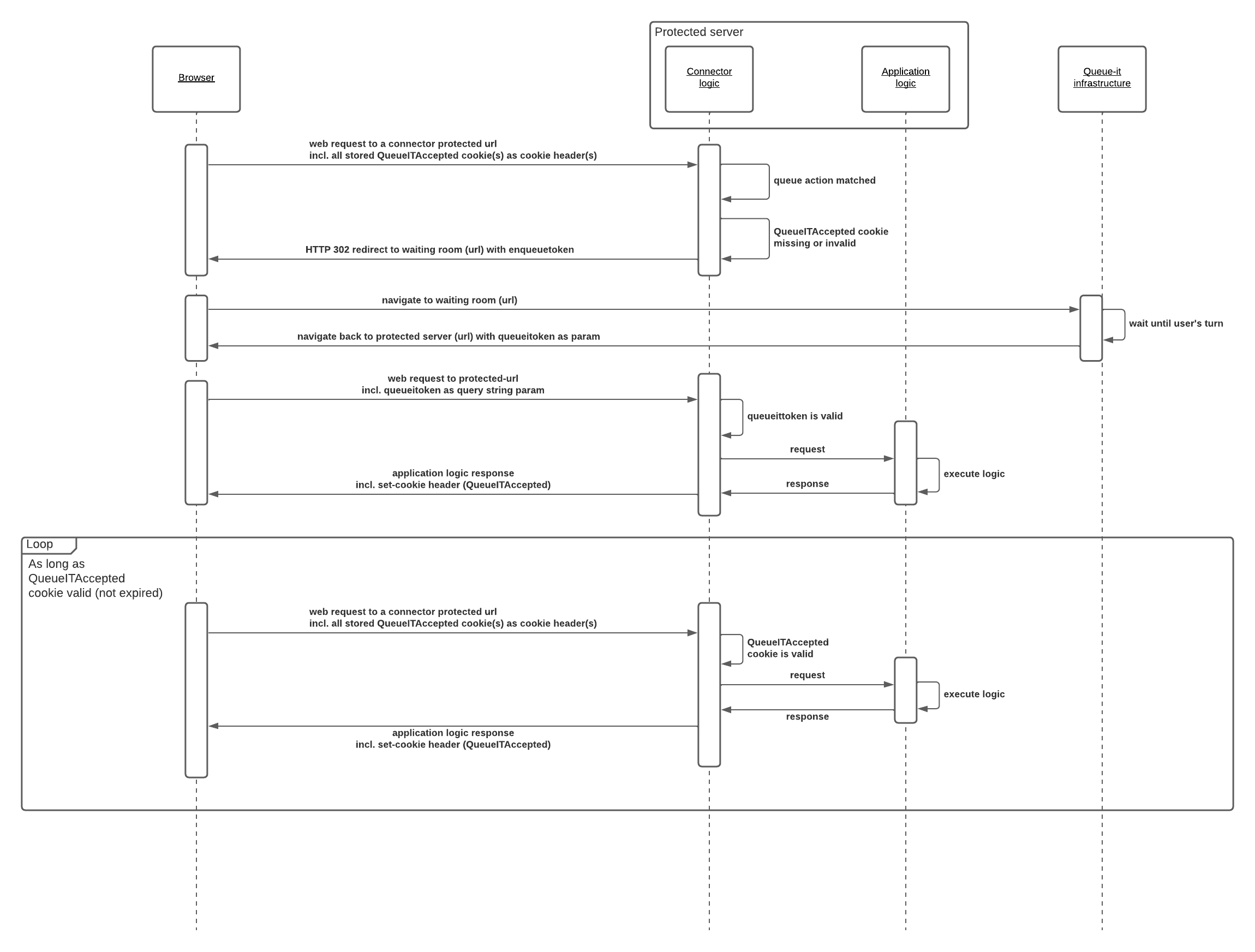This page is intended to give a high-level technical overview of the .NET Connector v4. To prevent malicious actors from compromising the security of our customer's high-profile sales and registrations, we host our in-depth Connector v4 documentation in private repositories.
If you need more detailed integration documentation than this page offers, connect with one of our technical experts who can understand your use case and determine the optimal setup for your tech stack.
The following diagram shows the Queue-it logic with a server-side Connector.
- User requests a page.
- The validation method sees that user has no Queue-it session cookie and no Queue-it token and sends him to the correct waiting room with a valid token based on the configuration.
- User waits in the queue.
- User is navigated back to your website, now with a valid token.
- The validation method validates the token and creates a Queue-it session cookie.
- The user browses to a new page and the Queue-it session cookie will let him proceed without queuing again.

To integrate using the Queue-it .NET Connector v4, you will need:
- An active Queue-it account
- Working ASP.NET Environment
- Queue-it admin available (Someone available with the GO Queue-it Platform access and familiarity with GO account configuration settings.)
- ASP.NET developer available (Someone available with knowledge of .NET and C# code, how to make changes to it and installing code packages.)
- A non-production ASP.NET environment that can be used for the initial implementation and testing of the new Queue-it Connector.
The ASP.NET Connector consists of the following components:
- Code package QueueIt.Connector.AspNet
- With dependency package: QueueIt.QueueToken
- Global.asax code additions (directives, a method, and an event handler)
Complete these steps in order for best results.
- Install Queue-it ASP.NET Connector Framework
- Implement Queue-it in the Code
Waiting rooms and their protection scope are created and configured in the Queue-it GO platform and server-side (KnownUser) configuration information must be propagated to the application environment for real-time access by the Queue-it Connector. When an integration configuration is saved (published) in the GO platform, the server-side configuration settings are packaged into a server-side JSON file and positioned on the Queue-it server, ready for secure downloading. Propagation of these settings (JSON) to the ASP.NET environment is performed automatically by the Queue-it ASP.NET Connector whenever the Queue-it integration configuration is published.